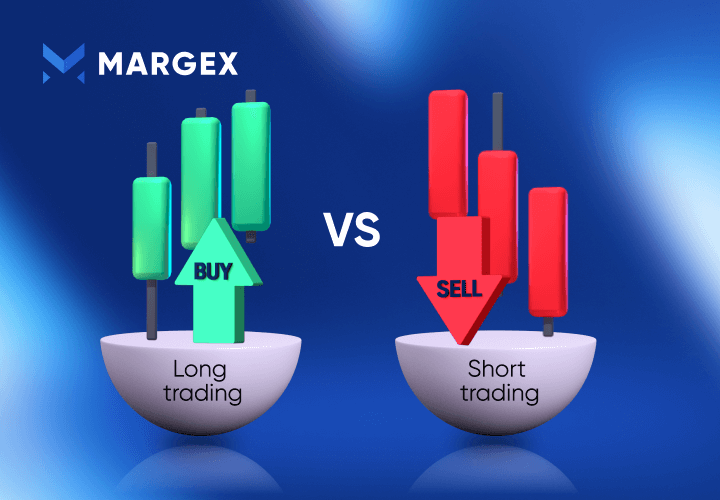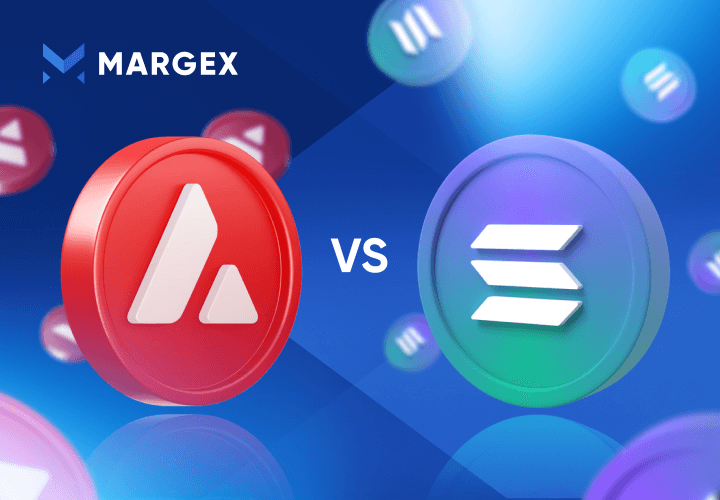Blockchain technology supports cryptocurrencies and supply chain management. But there are other distributed ledger technologies like the blockchain sector. Some blockchain alternatives include Hedera hashgraph, Tangle, R3 Corda, Holochain, and Nano Block Lattice. Some are not a hit yet, but an advanced technology like hashgraph might leap soon.
This article is a hashgraph vs. blockchain comparison guide showing their differences. Hedera hashgraph depends on distributed consensus through virtual voting. But blockchain uses a consensus mechanism, digital signatures, and hashing to ensure a tamper-proof distributed ledger.
Keep reading to know more about how these two technologies differ and what makes them unique.
Which Distributed Ledger Technology Is Superior?
Distributed ledgers improve transaction speeds and serve as platforms to develop micropayment solutions and store data. So, it might be challenging to compare blockchain and others to pinpoint the more advanced technology.
But each has unique data structures and concurrence mechanisms. Moreover, some DLTs are broader in scope, faster, versatile, and safer than others.
For instance, the blockchain is popular due to its support for diverse projects, including crypto, gaming, etc. It has been used in various private and public sector applications proving it an all-rounder.
Hedera harshgraph is also a great DLT capable of maintaining its database but with a better network consensus algorithm. Instead of requiring huge computing power, the algorithm simplifies things to fasten transactions.
So, while the blockchain offers few transactions in a second, the hashgraph network supports hundreds of thousands. Also, its consensus mechanism is better as it follows an unbiased approach by letting miners choose trade orders and manage them. It also uses an agreement timestamp to prevent participants from changing the order of transactions.
However, while the blockchain has been tested in public and non-permissioned applications, hashgraph has only been tested in unique and permission-based networks.
Understanding Blockchain Technology?

Blockchain is a distributed ledger or database that enables electronic maintenance of records. With a blockchain, you can record and track any asset, both tangible (physical) and intangible (virtual). The technology records and stores data in blocks, different groups of collected information.
Blockchain technology is unique because it offers an organized database in chronological order. Also, it uses cryptographic proofs to maintain the connection and security of all the recorded sensitive data.
With blockchain, there’s no requirement for a trusted third party since it ensures the security and fidelity of recorded data.
Blockchain characteristics
Besides deploying several cryptocurrency networks, businesses are tapping into promising technology to secure data records.
Here are the reasons blockchain is important.
- Operates with distributed ledger technology – Once information is captured, there is no room for concealment or duplication. All distributed data are transparent so that every network participant sees all transactions.
- Provides immutable records – All recorded and saved data or transactions cannot be changed. An error during the capturing process of a transaction will require creating and recording a new transaction to reverse the error. However, the first and the reverse transaction details will remain visible to everyone.
- Uses smart contracts – a blockchain network offers high transaction speed through smart contracts. These are some sets of rules that define the order of transactions and execute them automatically. By launching smart contracts, decentralization on a blockchain network eliminates third-party interference.
- Offers high security and trust – Blockchain secures information using cryptography as peer-to-peer network technology. Advanced encryption not only ensures data security but also provides trust, especially in cases of partnership. So, any information on a supply chain is a true representation of captured data on the several blocks of the network.
How does blockchain technology work?
The blockchain relies on three technologies, cryptographic keys, a P2P network of shared ledgers, and computing means. Every individual on the blockchain has two public and private keys representing their digital identity.
With this digital identity, individuals can reach a consensus on different transactions. Once they verify transactions, computing verification occurs to make it successful and secure in a new block.
Let’s use a step-wise approach using a proof of work platform, bitcoin, to explain how a blockchain platform works.
Step 1: Initiate a transaction
Network participants will input a transaction to send crypto to another user. After sending, the user waits for the network to carry it out and confirm. Afterward, a block is mined to include and validate transactions.
Step 2: Compiling of pending transactions.
All the nodes collect or group pending transactions into a block. At this point, the transactions are unconfirmed (not mined)
Step 3: Training
Every miner will pick transactions to add and create their own block while eliminating already-validated ones in previous blocks. The new blocks are called “candidates” and must contain the hash, Merkle root, and data mining competitions.
Step 4: Mining
Here miners must find a valid signature/ Hash for their block, which involves complex mathematical calculations unique to the new block formed. This process requires high computation power/electrical energy depending on system difficulty.
Step 5: Transmission of hash
All the nodes communicate during this step. When a mining node finds the hash, he transmits it with the block to other nodes for validation.
Step 6: Verifying the legitimacy
There are nodes in charge of verifying and validating blocks and hashes. The nodes will confirm compliance with the system requirement, legitimacy, and if the number of zeros is present. Also, the nodes confirm the PoW, the computational power a miner used in solving the complex mathematical problem to find the hash.
Step 7: Addition to the blockchain
Once the steps above have been completed, the new block will be added to the blockchain.
Understanding Hedera Hashgraph?
Hedera hashgraph is a stand-alone distributed ledger technology. Although Hedera hashgraph operates similarly to the known blockchain technology, both are quite different.
The security level of the Hedera hashgraph infrastructure is pretty high compared to that of blockchain technology. Additionally, the gossip protocol system provides a fair and quick operation to deploy dApps (Decentralized applications).
Hedera hashgraph technology is useful for both private and public projects. The prominent ones are dApps and digital currencies. The decentralized distributed ledger technology facilitates projects through its unique features, Lightning-fast throughput, and Asynchronous byzantine fault tolerance.
While other blockchain solutions depend on PoW, PoS PoE, etc., Hedera hashgraph functions through unique consensus mechanisms. This includes Gossip about Gossip and Virtual voting, making it energy efficient.
Hedera hashgraph characteristics
There’s so much to point out about the Hedera hashgraph. But what are the major characteristics of this distributed ledger technology?
Hedera hashgraph is protected
It’s impossible to alter Hedera hashgraph system before and after getting its consensus protocol. This is majorly due to its Asynchronous Byzantine Fault Tolerant System.
Time-saving
Users can save ample time with the Hedera hashgraph technology because of its processing speed. In one second, Hedera hashgraph can process hundreds of thousands of transactions and validate signatures.
Hedera hashgraph is Transparent
Hedera hashgraph is renowned for the transparency of consensus algorithms. The DLT achieves it through a uniform time-stamping technique.
Token
Hedera hashgraph has a token known as HBAR. The hedera token service token is used to pay transaction fees, incentivize security and keep the entire system secure. Once the users order a transaction, he pays the consensus node to process it. Also, users earn staking rewards in HBAR tokens.
How does hedera hashgraph tech work?
Hedera uses a unique Hashgraph consensus algorithm based on Asynchronous Byzantine Fault Tolerant (ABFT). Hash graph generates a consensus timestamp for every transaction. This timestamp shows the time when many networks get the transaction.
Using the ABFT consensus, all the nodes on the network participate in each consensus round, including faulty ones. Currently, the consensus nodes on hedera public ledger are stored and run by its Governing Council. Currently, only the Council members have access to the mainnet.
The network is still permissioned, although there are plans to migrate to a permissionless state. When that happens, the nodes will participate based on the number of HBARs (Hedera tokens) they own.
Let’s consider the process of transacting on Hedera below
Step 1: Initiate a transaction
A participant starts the process by submitting a transaction to a particular node requesting it to be submitted.
Step 2: Node response
The node that received the transaction will check the compliance with requirements. If it meets the criteria, the node will ask the client to pay transaction fees meaning that the transaction will be added.
Step 3: Receipt
Once the node submits the transaction and reaches a consensus, the receipt will be generated for the transaction. This receipt shows whether the transaction has been added to the consensus state successfully or wasn't. It also indicates the identifier of the transaction object.
The receipt is sent to the client to confirm the success of the entire process.
Hedera Hashgraph Vs. Blockchain: Differences Between Blockchain And Hashgraph
Both the blockchain and Hedera hashgraph are distributed ledger technologies. But they differ in some ways. Let’s check below.
Approach
When it comes to approaches to data storage, Hedera hashgraph and the blockchain differs. While the former uses a directed acrylic graph to store and access information, blockchain uses blocks in a linear manner.
But the nodes on both technologies have a ledger copy, ensuring network decentralization.
Security
Hedera Hashgraph uses the Asynchronous Byzantine Fault Tolerance (aBFT) to ensure security and discourage bad actors. This mechanism prevents data tampering and ensures correctness in data recording. It has also enabled the DLT to prevent 51% attacks. Once the Governing Council stores a transaction on the network, no one can edit or change it.
But, the blockchain uses cryptographic methods to protect data storage and transmission on a network. These digital blocks cannot be tampered with by hackers.
When a bad actor changes any data on the block, the signature becomes wrong, alerting the nodes that malicious activity has occurred.
Consensus mechanism
Hedera relies on Hashgraph consensus mechanism to operate. It uses virtual voting to reach a consensus. This mechanism is powered by two different nodes, consensus and mirror nodes.
Consensus nodes determine the ordering and history of every transaction. But mirror nodes share the information about it with the network's stakeholders. This method ensures that every transaction is completed on the Hedera mainnet.
Blockchains rely on many consensus mechanisms to validate transactions without a central authority. Some of the popular ones include
- Proof of stake (PoS)
- Proof of work (PoW
- Proof of Elapsed Time
- Delegated Byzantine Fault Tolerance, etc.
Every blockchain uses its own consensus mechanism.
Faster transactions
The popular hedera hashgraph Gossip method is the factor behind its faster transaction speeds. Gossip about gossip shows the history of previous transactions and their relationships to one another through the parent hashes.
This method reduces the amount of information that must be spread to all the nodes as more event occurs. This is the reason behind hedera claims of 500,000 transactions per second.
Blockchain speed of processing transactions differs according to the network. For instance, cryptocurrencies deployed on the blockchain, such as Bitcoin and Ethereum, have been known to be slow. Transaction speed ranges between 100 to 10,000 per second.
Fairness
Hedera hashgraph randomly allocates nodes through timestamping. This method ensures that every individual is treated the same way without preferences. But this is not the same on the blockchain.
For instance, in a proof of work blockchain such as Bitcoin, miners can select the order to process or the one to stop. This choice is usually affected by the amount of gas fees a user pays on the network. The higher the fee, the faster the order is completed.
But in a hashgraph vs. blockchain comparison, it’s not yet clear the DLT that tops in fairness. The extent of Hedera hashgraph fairness is yet to be defined, tested broadly, and proven.
Efficiency
Comparing hashgraph vs. blockchain based on how efficient they are, users vote hashgraph as a 100% efficient network. Hedera Hashgraph doesn't depend on block creation as the blockchain does. It relies on events, and the information to propagate on the network is usually smaller. '
But a blockchain use blocks resulting in a less efficient network. Sometimes, miners might mistakenly mine two blocks simultaneously. In such cases, they will decide on one and discard the other, leading to wasted effort, time and inefficiency.
Can hashgraph replace the blockchain?
Hedera Hashgraph is efficient, fast, and secure. But its usage is still not proven, especially in a permissionless approach. On the other hand, the blockchain structure has been tested in diverse projects. While the crypto industry pushed it out in 2009, more sectors have picked up interest in it.
Currently, many companies are already using the blockchain to facilitate operations. Also, developments of many private blockchains are in the pipeline. This might push for enterprise-level adoption for it. So in hashgraph vs. blockchain comparison, we can say that the former is a great alternative to the blockchain but won't replace it. Even though blockchain is not perfect, it offers broader functionalities, and its adoption is skyrocketing.
FAQ
Can hashgraph DLT replace the blockchain?
Currently, hashgraph cannot replace blockchain. Despite some issues in blockchain development, the technology records more adoption and case uses than hashgraph. However, hashgraph might gain popularity with full manifestation at a more mature stage.
Does HBAR utilize blockchain tech?
HBAR does not use blockchain. It’s a distributed ledger that uses hashgraph to operate. This involves using a directed acyclic graph (DAG) for recording transactions.
Which cryptocurrency uses hashgraph?
Hedera HBAR is the only cryptocurrency that is currently using hashgraph. There is still no other crypto asset that uses hashgraph. Hedera HBAR uses a directed acyclic graph (DAG), distinguishing it from blockchain technology.
Why is HBAR unpopular?
HBAR is built on hashgraph technology. The token is listed on a few exchanges. Also, several proponents of blockchain technology see hashgraph as a limitation to more adoption of blockchain. Hence, many are boycotting HBAR, the product of the technology.
Is Hedera hashgraph superior to blockchain?
Hedera hashgraph has shown to be more robust in providing solutions to certain aspects where blockchain tends to have issues. Hedera currently stands as the fairest platform and offers faster transactions. While the former maintains about 500,000 transactions per second, the latter goes with about 100 – 10,000 transactions per second. In hashgraph vs. blockchain, Hedera hashgraph is more efficient and faster than the blockchain.
Is HBAR's future positive?
HBAR has a more favorable future once hedera hashgraph gains more adoption and popularity. The cryptocurrency is solely for long-term purposes, as many predictions see a bullish trend over the next four to five years. However, the volatility of the cryptocurrency could distort any predicted pattern for HBAR even in the future.
What technology will come after blockchain?
It could be quite challenging to ascertain the next big thing after blockchain. Blockchain is yet to receive its maximum adoption globally and still has numerous untapped benefits for the future. So, there’s a need to create more awareness to spread the adoption of the technology through education and sensitization.





